Monaco hosted Strasbourg this past Saturday in Ligue 1 action. Only five points currently separate Ligue 1’s 15th placed St.Etienne from fourth-placed Montpellier. As a result, the battle in the middle of the Ligue 1 table for European qualification spots is currently being hotly contested.
Two teams involved in that mid-table battle are Monaco and Strasbourg. Strasbourg went into Saturday’s game trailing Monaco by two points. However, they came out of Saturday’s game with an impressive 3-1 victory. This now lifts them above Monaco and into eighth place in Ligue 1.
Saturday’s game provided new Monaco head coach Robert Moreno with his second straight Ligue 1 loss, following his side’s 4-1 defeat at the hands of PSG 10 days prior. This tactical analysis piece will examine Moreno and Monaco’s unsuccessful tactics in this game. Furthermore, we will analyse how Strasbourg manager Thierry Laurey got his side’s tactics spot-on and played a major role in their impressive win.
Lineups and formations
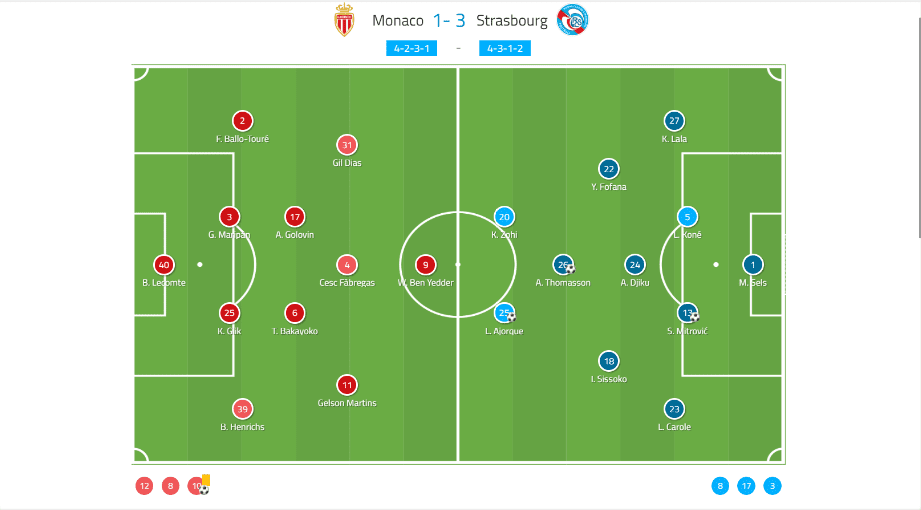
Monaco generally lined up in a 4-4-1-1 shape throughout this game. This has been a relatively common shape for Moreno’s Monaco during the early days of his managerial tenure thus far.
Personnel-wise, there weren’t many surprises in Monaco’s starting 11 here. However, Gil Dias enjoyed his first Ligue 1 appearance under Moreno in Saturday’s game. He took the place of Keita Baldé Diao, who was absent for this fixture.
Moreno went with his usual back four, including right-back Benjamin Henrichs who has enjoyed an increasingly important role under the new manager. This saw Gelson Martins assume his role at right-wing. Tiémoué Bakayoko and Aleksandr Golovin formed the central midfield pairing of Monaco’s team. This allowed Cesc Fàbregas to play further forward supporting Wissam Ben Yedder.
Strasbourg utilised a 4-diamond-2 shape for Saturday’s fixture. Lebo Mothiba was absent for the fifth-straight game in all competitions for Strasbourg. Kévin Zohi took his place alongside Ludovic Ajorque in the attack.
Dmitri Liénard took to the bench as Laurey opted for the midfield quartet of Adrien Thomasson, Youssouf Fofana, Ibrahima Sissoko, and the defensive-minded selection of Alexander Djiku.
Strasbourg’s diamond midfield creates problems for Monaco in the build-up
Strasbourg’s diamond midfield helped them immensely in creating a solid defensive shape. Strasbourg’s defensive shape created an overload in favour of them in the central areas versus Monaco’s 4-4-1-1. Their defensive shape was particularly successful in preventing Monaco from playing through them during the build-up.
Strasbourg essentially cut-off Monaco’s access to the central areas with their compact defensive shape. As a result, Monaco were forced to play the ball out into the wide areas in order to try and progress into Strasbourg’s half throughout this game.

This image above shows us Monaco’s ‘pass map’ from Saturday’s game. This image illustrates Monaco’s difficulty with playing through the midfield. Monaco’s darker and thicker lines here indicate a more frequent passing combination.
We can see here that the darker lines form something of a ‘U’ shape around the midfield between Monaco’s centre-backs, full-backs, and wide attackers. Meanwhile, this image also shows us that in comparison, passes between Monaco’s defenders and midfielders were much less common. This illustrates Monaco’s typical patterns of build-up play in Saturday’s game.
In defence, Strasbourg utilised flexible man-marking. This allowed them to effectively take Monaco’s central passing options out of the game in the build-up. While this also allowed Monaco’s movement to manipulate Strasbourg’s shape, their midfield overload allowed them to prevent Monaco from exploiting this too often.
Strasbourg didn’t press Monaco particularly aggressively during the build-up play. However, as Strasbourg attempted to progress down the wings, Strasbourg then increased their pressing intensity. Strasbourg’s near centre-forward would generally track Monaco’s full-back, while their midfield diamond shifted over to the wing, helping support the increased press. This was often successful in forcing Monaco to retreat.
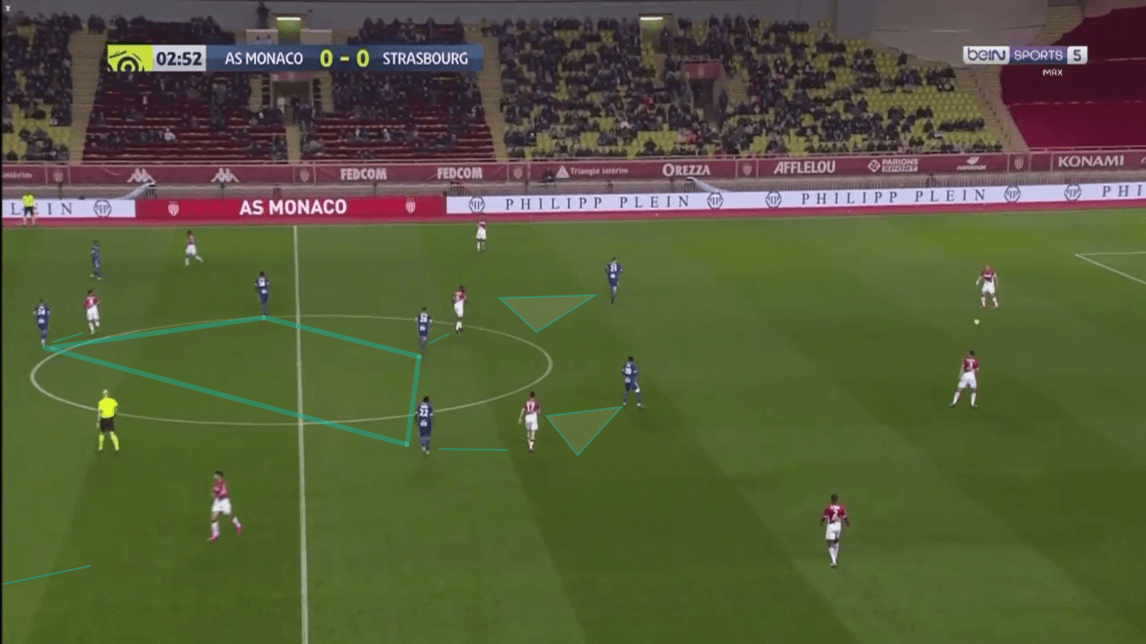
This image above shows us an example of Strasbourg’s diamond midfield in action as Monaco attempt to play out from the back in the early stages of this game. Here we can see Monaco’s centre-backs on the ball. We can clearly see here the effectiveness of Strasbourg’s compact shape.
Strasbourg were happy to let Monaco have the ball in the defensive line. As a result, their two centre-forwards sat off the centre-backs, which we can see in this image. Instead, they block off the passing lanes to Monaco’s central midfielders. As right centre-back, Kamil Glik receives possession here, left centre-forward Ajorque shifts over to the left wing to block the passing lane to Henrichs.
Bakayoko and Golovin are also being closely marked by Thomasson and Fofana here. Meanwhile, Djiku, at the tip of the diamond, marks Fàbregas. These three all performed flexible man-marking jobs versus Monaco’s midfield. They followed their men strictly, but they could pass their men onto other players, such as Sissoko, who we can see provides an extra free body in midfield here, if necessary.
We can also see Monaco’s Dias at the bottom of this image moving outward back to his left-wing position. He was marked by Kenny Lala, just out of the image, while Martins was marked by left-back Lionel Carole.
Strasbourg’s tight marking, compact shape and midfield overload was effective at limiting Monaco’s options in the build-up. Their only real viable passing options in this image are their full-backs. As they attempted to progress the ball up the pitch using short-passing, they were forced to play through their full-backs. As this passage of play continues, Glik plays the ball out to left-back Fodé Ballo-Touré.
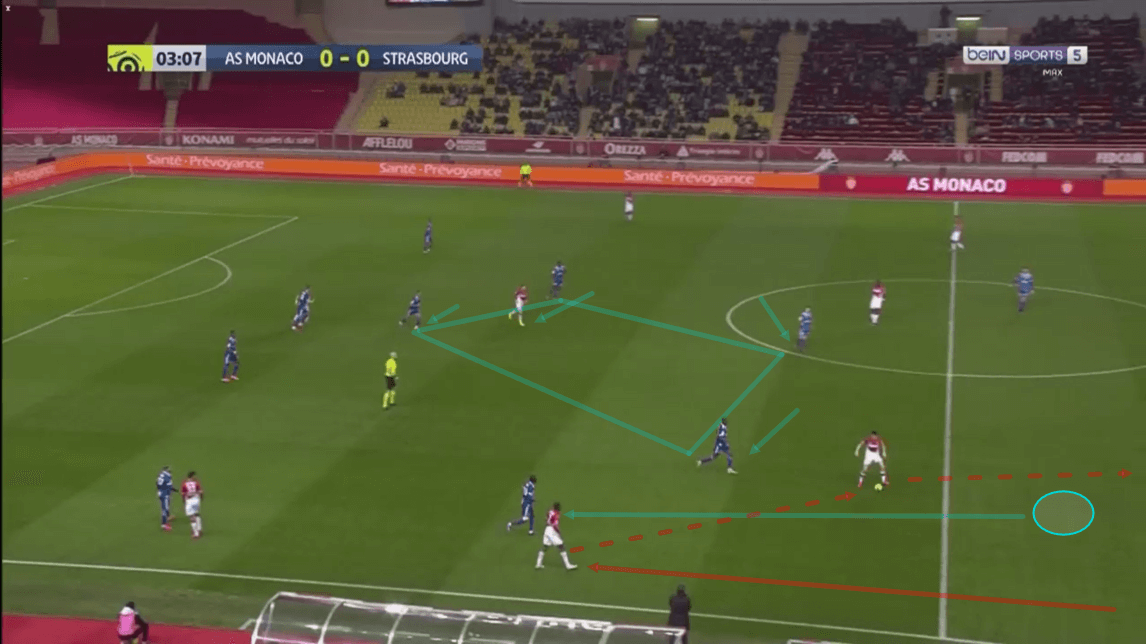
This next image shows us how this passage of play progressed once Ballo-Touré received possession. With no viable passing options, the left-back attempted to carry the ball passed Strasbourg’s midfield. As he did so, Strasbourg’s press became aggressive.
Right centre-forward Zohi diligently tracked Ballo-Touré’s run, as we see here. In addition to that, Strasbourg’s midfield diamond shifted over to their right-wing to remain compact and support the press. Fofana dropped off Golovin slightly to provide cover behind Zohi. Meanwhile, Djiku shifted over to the right side more, allowing Sissoko to pick up Fàbregas.
Strasbourg’s press forces Ballo-Touré to play the ball back to Golovin. As Golovin receives the ball he is immediately pressed by Fofana once again. Golovin is subsequently forced to play the ball back to the centre-backs where Monaco must start over.
It is clear that Monaco’s diamond midfield played a big role in stifling Monaco’s attempts to build out from the back. Monaco’s struggles in the build-up made life difficult for them throughout Saturday’s fixture.
Monaco’s effective off the ball movement
Monaco struggled to create throughout this game. They finished this game having attempted just two more shots than the visitors, despite keeping 20% more of the possession. Furthermore, just three of Monaco’s shots were on target, compared to seven of Strasbourg’s.
Strasbourg’s defensive quality was evident in this game and Monaco struggled immensely to break them down. However, Monaco did show some promising signs during this game. One feature of Robert Moreno’s tactics is fluid off the ball movement. Monaco could have used more of this in this game, as when they did pull it off, it was effective in helping them to open Strasbourg up on occasion.
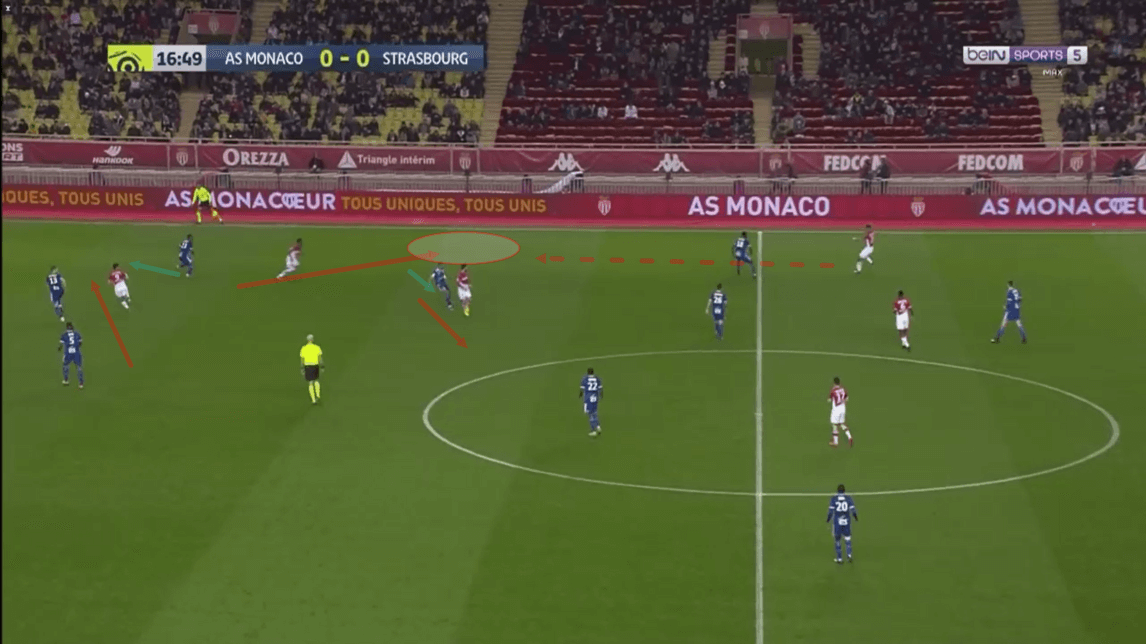
As we mentioned previously when discussing Strasbourg’s defensive shape, their man-marking could be manipulated by Monaco’s movement. Strasbourg’s defence was strong and prevented this from doing too much damage. However, we can see an example of Monaco playing through Strasbourg’s first line, into space high up the pitch in this image above.
On this occasion, Monaco’s off the ball movement was effective in dragging Strasbourg’s defence out of position. As they manipulated Strasbourg’s solid defensive shape, they created space to move into themselves, in which they could do more damage.
In this image, we can see Fàbregas moving away from the ball-side wing, towards the centre of the pitch. We can also see centre-forward Ben Yedder making an outward run towards the wing. This type of run has been synonymous with Robert Moreno’s sides. His movement creates a 2v1 situation on the right-wing in favour of Monaco.
Ben Yedder’s run pins left-back Carole back, as he is hesitant to press Martins when Ben Yedder is threatening to move in behind. As a result, Martins is free to drop deep where he can receive the pass from Henrichs in space. This is an example of Monaco’s effective use of off the ball movement to open up Strasbourg’s defensive shape.
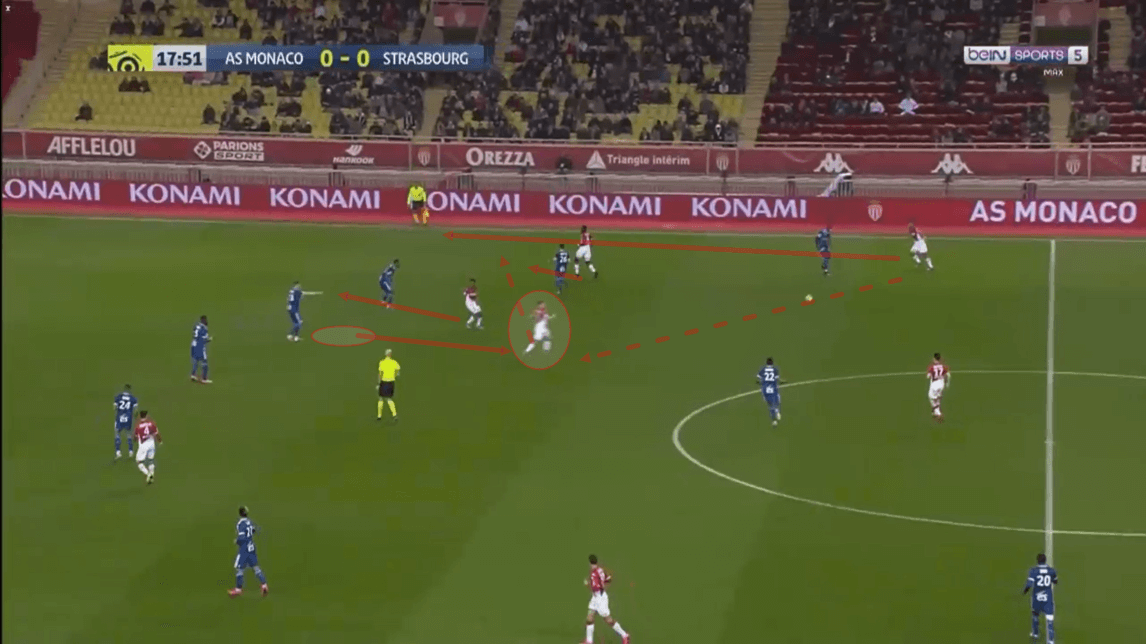
This second image provides us with another example of the effectiveness of Monaco’s off the ball movement. In this image, we can see Fàbregas playing as Monaco’s furthest forward player. He has moved to a left centre-forward position in this image. His movement drags Djiku with him.
Meanwhile, we can see Bakayoko having moved from his deep central midfield position to a position high on Monaco’s right-wing. He is followed by Thomasson. We can see Fofana staying tight to Golovin in the centre circle and lastly, we can see Sissoko pressing Henrichs.
Monaco’s off the ball movement effectively created a rare amount of space in the midfield for Monaco. Ben Yedder subsequently drops from his centre-forward position to occupy this space and create a passing option. He is circled in this image above, as Henrichs finds him in midfield.
Ben Yedder is subsequently able to play the ball out to Bakayoko on the right-wing. Monaco successfully overload the right-wing here as Henrichs overlaps and Martins provides a narrower option. They manage to create a crossing opportunity from this chance.
It is clear that although Monaco struggled to break down Strasbourg’s defensive shape through their passing and dribbling, their off the ball movement was effective at helping them to play through Strasbourg’s solid defensive shape at times. Unfortunately for Monaco, these moments of effective off the ball movement were few and far between in Saturday’s game.
Strasbourg’s effective use of central overloads in the build-up
Strasbourg’s midfield diamond was clearly effective at helping them to prevent Monaco from playing through the midfield. However, Strasbourg’s use of the midfield overload was also very effective in helping them during their own build-up. Strasbourg frequently advanced the ball into the final third through the central areas in this game.
Strasbourg rarely tried to build from the back using their centre-backs from goal-kicks. They only attempted short goal-kicks on rare occasions. Strasbourg utilised long goal-kicks much more frequently in this game. As a result, they got the ball straight into central and wide areas and attempted to win the second ball. These tactics were relatively successful for Strasbourg here.
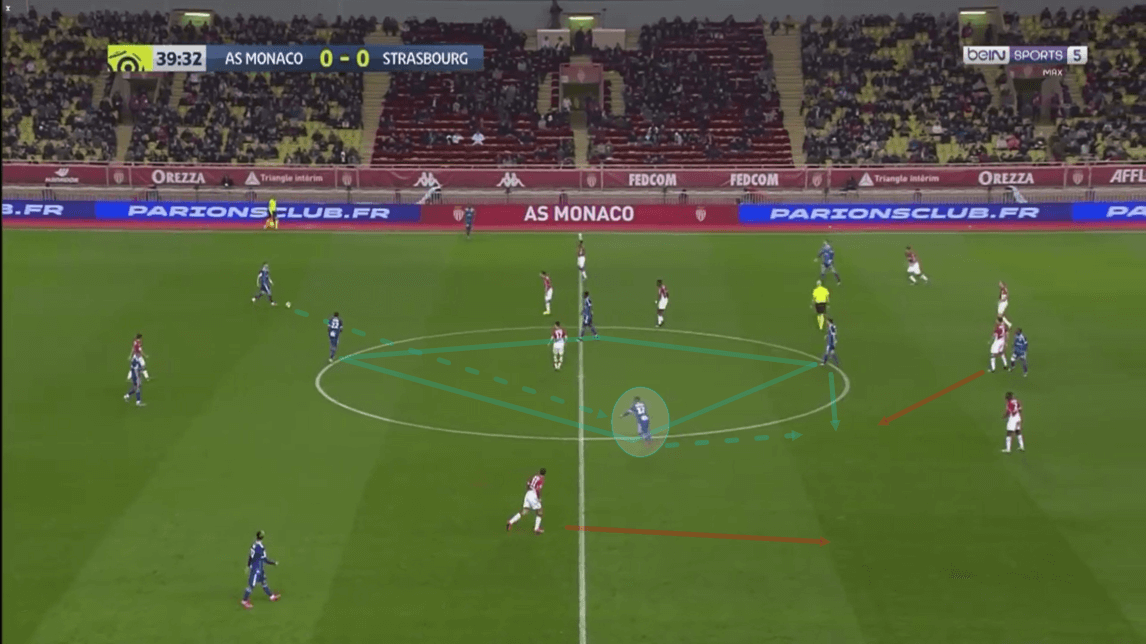
This image above shows us an example of Strasbourg’s build-up play in this game. This image is taken shortly after a Strasbourg long goal-kick aimed at Ajorque, who moved out to the left-wing to contest the aerial battle with the significantly smaller Monaco right-back Henrichs. As Ajorque won the ball, Strasbourg quickly played it back to their relatively high centre-backs.
From here, Strasbourg could play through the middle of the pitch. They were able to successfully build-up this way due to, primarily, their midfield overload, and secondly, Monaco’s non-aggressive pressing. This allowed Strasbourg’s centre-backs to take their time on the ball and play it into the midfield, where they were numerically dominant.
This image shows us how Strasbourg’s midfield diamond formed in attack to overload Monaco’s centre-midfielders. On this occasion, Fofana, circles in the image, drops slightly deeper to receive the ball from Stefan Mitrović. He is subsequently able to quickly play the ball to Thomasson, who begins to make his run out to the right-wing from the centre.
As Thomasson receives the ball, he is unmarked in a dangerous position. This drags left centre-back Guillermo Maripán out of the defence in order to press him. This image provides us with a clear example of Strasbourg’s effectiveness in creating central overloads in the build-up. From here, Strasbourg can quickly move the ball on to the final third.
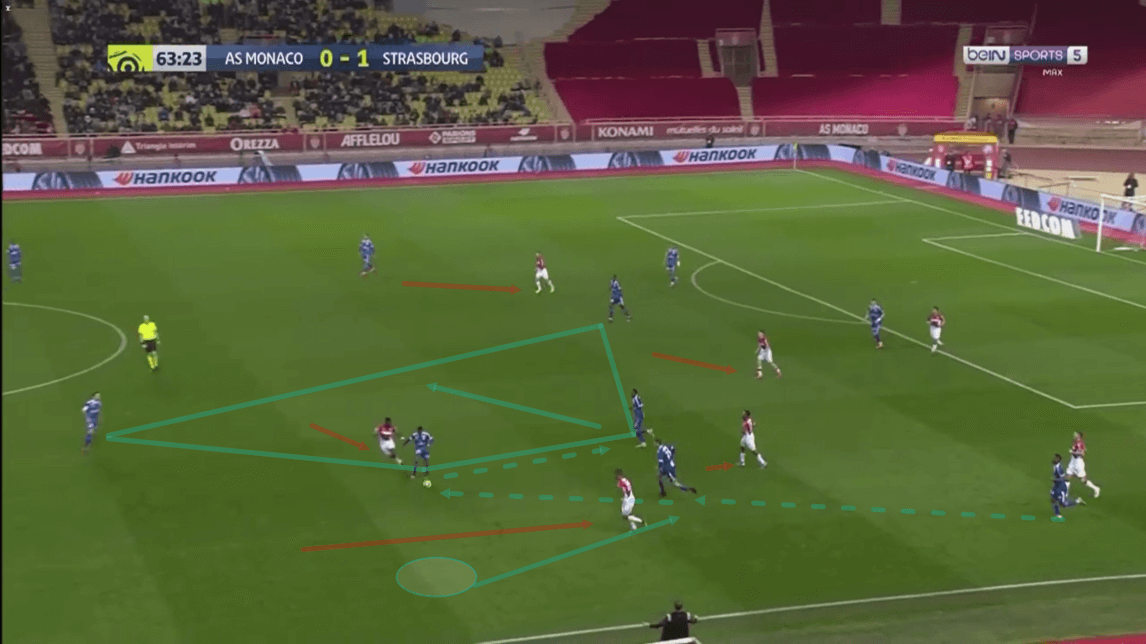
This second image shows us how Strasbourg’s central overloads were key in helping them to start counter-attacks as Monaco began to press higher in the later stages of this game.
This image is taken moments after left-back Carole escaped an aggressive Monaco press by playing the ball to dropping centre-forward Ajorque. Ajorque’s movement helps his side to play past Monaco’s press. He quickly progresses the ball into the midfield. From there, Strasbourg have the numerical advantage and they can counter-attack in numbers.
Strasbourg utilised some impressive and effective one-touch football in the midfield and attacking areas in this game. They attacked at pace, without playing a great number of passes.
This was effective for them in the build-up, because of their effective central overloads. They had enough numbers in midfield to create plenty of simple progressive passing options. As a result, Strasbourg could build attacks quickly and beat Monaco’s press.
Strasbourg attack the wings in the final third
While Strasbourg’s build-up play was reliant on central overloads, their play in the final third relied more heavily on wide overloads. Strasbourg frequently progressed the ball from the midfield out to the wings in order to complete their penetration of Monaco’s defence. These tactics were successful in the creation of Strasbourg’s first two goals.
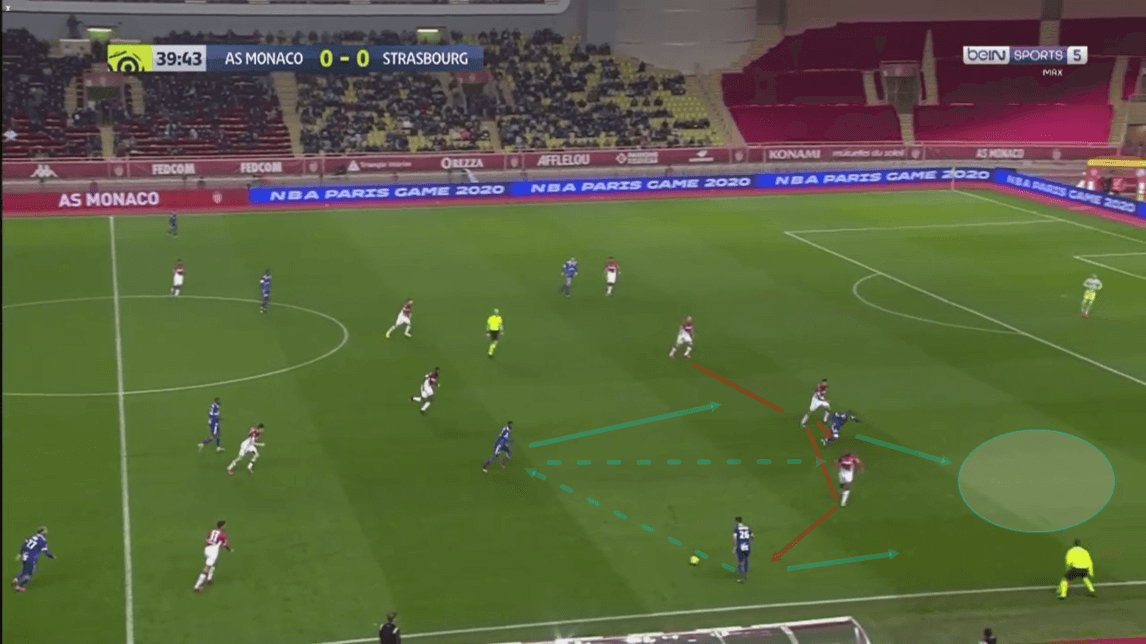
This first image is taken just moments after the first image we discussed in the previous section of this tactical analysis discussing Strasbourg’s effective use of central overloads in the build-up. Here, we can see how Strasbourg quickly progressed their attack from the centre in the build-up, out to the wing.
Thomasson is occupying a right-wing position in this image. He is currently in possession of the ball. His movement out to the right-wing helps his side to create a wide overload in the final third. He attracts the press of Ballo-Touré here. However, he is able to quickly combine with right central-midfielder Fofana to get around Ballo-Touré’s press.
As Fofana receives the ball in space on the right, he is able to find Zohi first time, making a probing run behind Ballo-Touré into space on the right-wing. Zohi drags left centre-back Maripán out to the wing. Following his pass, Fofana continues his run forward. This exploits the space being created between Glik and near centre-back Maripán.
As Maripán moves out to the wing, Glik is forced to move across to the left. Zohi effectively beats Maripán for pace and plays a low-cross into the Monaco box. His cross finds Ajorque who beats his new marker, right-back Henrichs. Ajorque manages to finish his chance and put Strasbourg 1-0 up.
The effectiveness of Strasbourg’s wide overloads in the final third are evident from this passage of play.
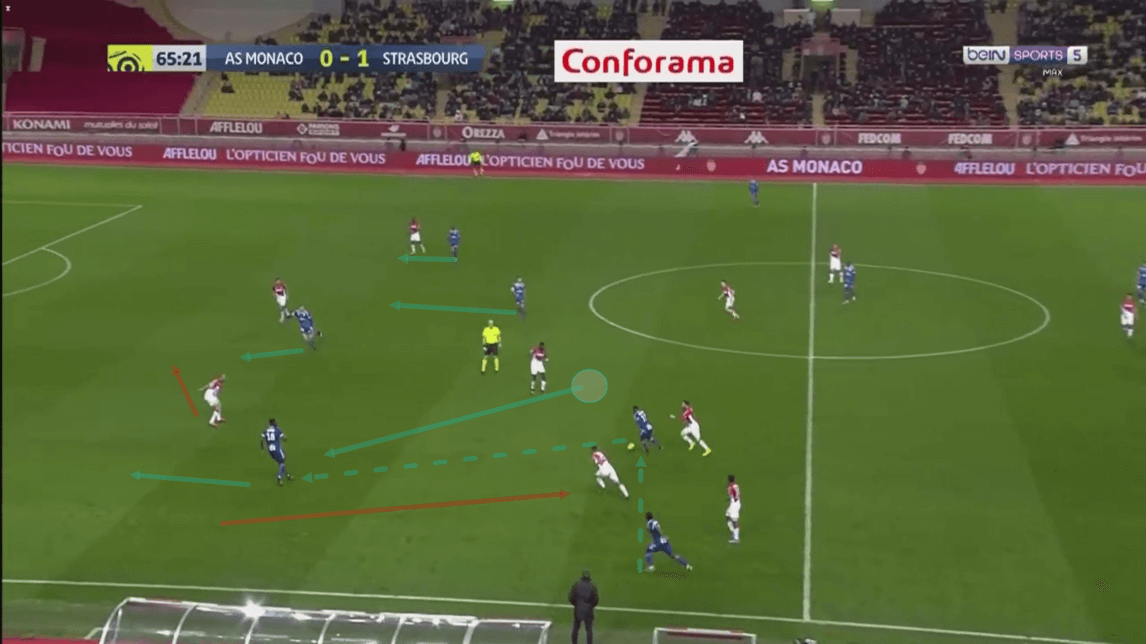
This second image is taken from the second half of the game. Similarly to the first image, this shows us an example of Strasbourg creating a chance with their use of wide overloads. On this occasion, Carole had just found substitute midfielder Jean-Ricner Bellegarde on the left-wing.
Bellegarde attracts the press of Henrichs here, however, he quickly dribbles past the left-back. Sissoko vacated his central midfield position to prove into space behind Henrichs. As Bellegarde beats his man, Sissoko’s movement creates an overload on the left-wing for Strasbourg.
Sissoko is subsequently able to continue his run down the left-wing and get into a position to cross the ball. This attack results in Strasbourg earning a 2-0 lead.
Conclusion
To conclude this tactical analysis piece, it is clear that Strasbourg’s midfield superiority was the key for them in winning this game. Manager Laurey got their tactics spot on in this game. As a result, his tactics helped his side massively to prevent Monaco from playing and to effectively create dominant attacking sequences.
It is also clear that Robert Moreno’s tactics failed to overcome the difficult challenge set by Strasbourg here. His side struggled immensely in possession in this game. One positive for Monaco will be their effective use of off the ball movement on occasion here. However, they will hope to improve on the ball moving forward in these types of games.


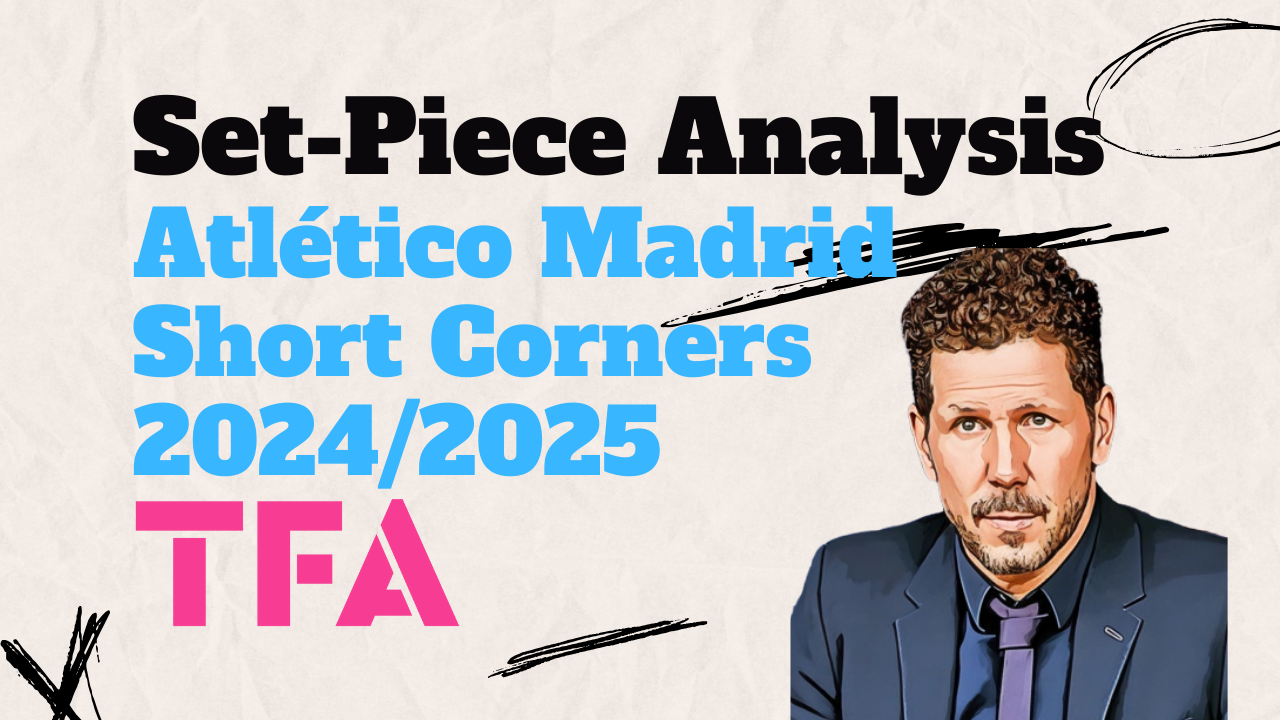
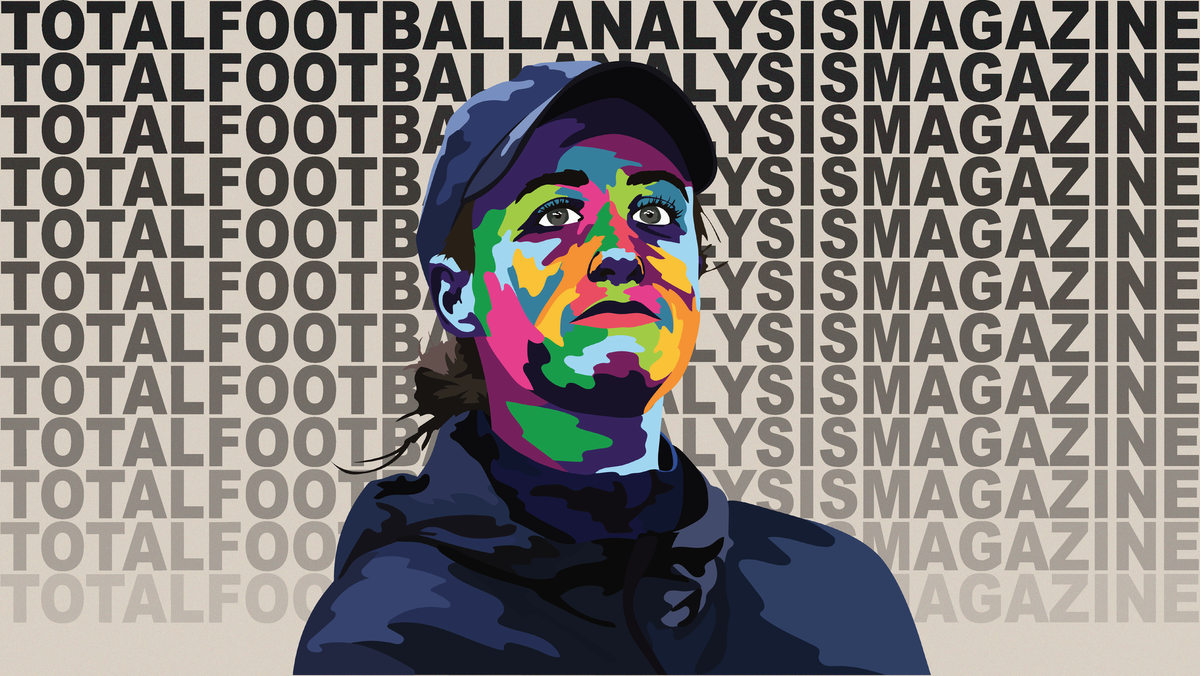
Comments